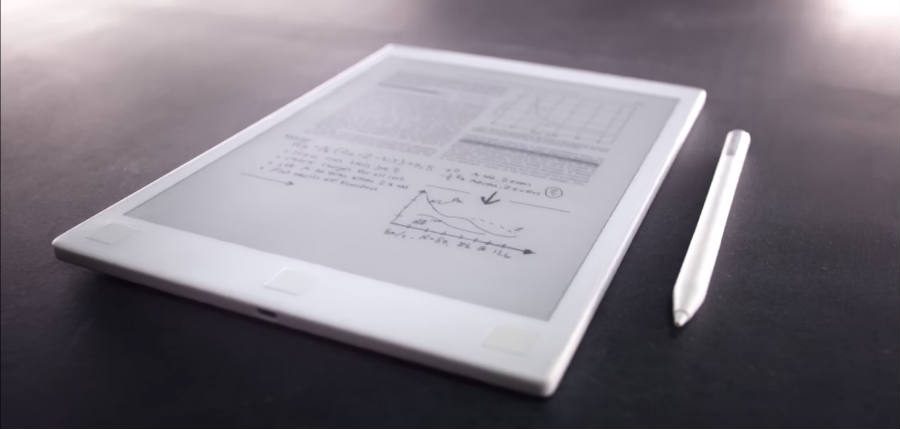On Wednesday, the first wave of reviews of the reMarkable paper tablet started hitting the web. The paper-like device announced last November is an e-reader that also doubles as a digital sketch board, and it starts shipping this August for $529.
The Norwegian startup promises an e-ink experience like no other device can provide, offering the lowest latency in the market and live sync options with compatible cloud apps for iOS, Android, Mac, and Windows.
There is little competition in this segment, as Sony’s next-gen Digital Paper tablet is the only contender still standing. The DPT-RP1, as it is also know, comes out this June for $699. reMarkable is expected to cost roughly the same once the launch promotion ends.
The “Paper Tablet” has been praised by many
reMarkable looks like any other tablet out there, but when you take a closer look you realize there are unique qualities that truly set it apart. Early reviewers have confirmed as much after using the paper tablet, which they claim is an above-average experience compared to similar devices.
Now, the “paper tablet” moniker is not literal, of course. The material of the reMarkable’s display does feel like paper, though, and writing on it with the digital pen even makes a sound similar to the tip of a pencil brushing against a paper sheet.
The Norwegian technology has named this technology CANVAS Display, and it ships in a 10.3-inch panel on the reMarkable. The tablet has only monochrome output at 226 dpi, but it supports 16 different shades of grey and true black ink in documents and sketches.
On the technical side, reMarkable’s rendering capabilities are powered by a 1-GHz ARM A9 chip and 512 MB of DDR3L RAM. It runs on Codex, a Linux-based OS designed for low-latency e-readers, and it has 8 GB of storage that are equal to roughly 100,000 pages.
PDF and EPUB are the only document formats supported at the moment, although the company says it will expand this list soon. The menu and the whole interface are only available in English, and the 3,000 mAh battery lasts up to five days and can be recharged via micro USB.
reMarkable features no glass parts, for which the company says it is virtually indestructible. The digital pen also needs no pairing or battery, but the tips do run out and need to be replaced. A special compartment at the top end of the pen hides a spare tip for easy switching.
Other than that, reMarkable has put a lot of effort into crafting a beautiful in-tablet platform that lets users create different notebooks with different templates, create free-hand sketches, and annotate documents just as they would on a piece of paper.
The pre-order deal makes the reMarkable very attractive
The most notable downside, however, is that reMarkable is launching with a close-end private cloud service, which means the drawings and commented documents you create can only be shared using that proprietary app (although it is available on both mobile and desktop platforms).
Speaking to the BBC, CEO Magnus Wanberg said they did not discard the option of opening up to other cloud providers like Dropbox and Google Drive in the future. They might certainly need so, because after the launch discount runs out, the tablet will cost $700.
For now, though, you can preorder your standalone reMarkable for $529 or ask for a bundled one with a protective folio and pen for $479. Hurry up, though, waiting times are getting longer and current orders start shipping in October.
Source: reMarkable



